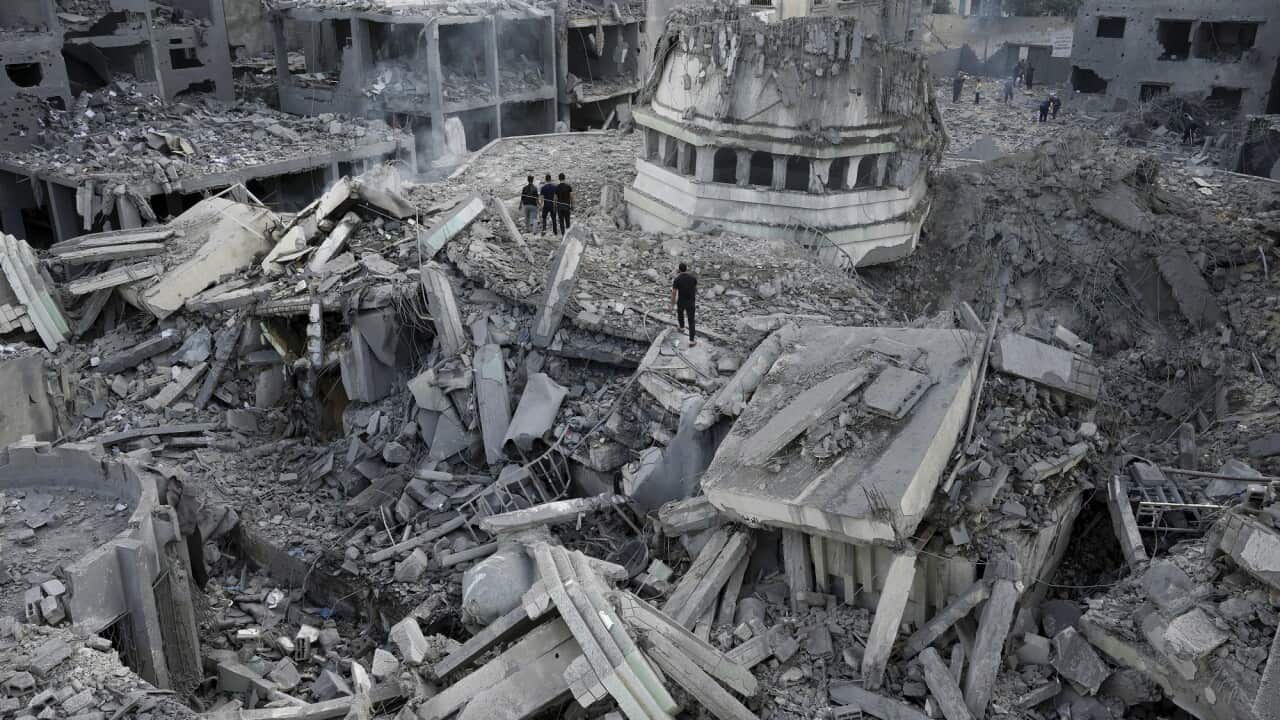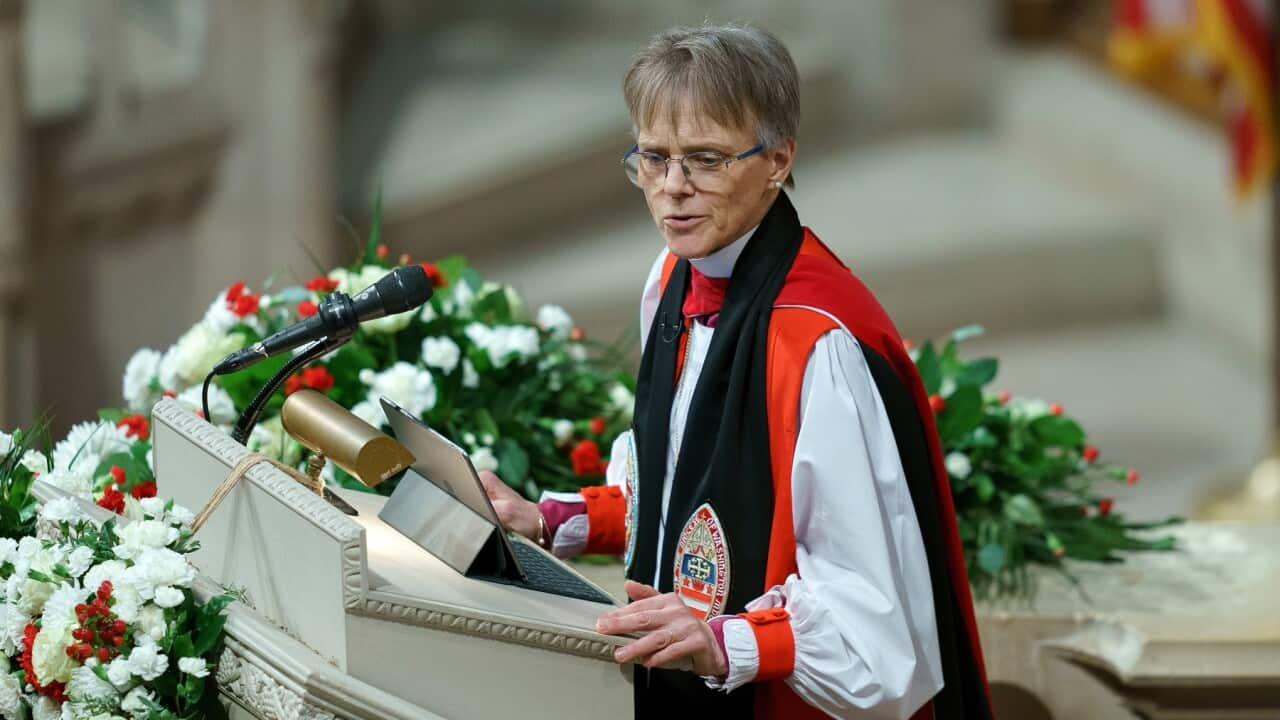TRANSCRIPT
(Sounds of cheers)
In Gaza, news of a ceasefire and hostage deal between Israel and Hamas, brokered by Qatar, the US and Egypt, has been welcomed as an opportunity for some respite from 15 months of fighting.
But there is apprehension as elements of the deal are still being finalised - and there are also fears that Israel could take advantage of the window of time before the ceasefire takes effect to continue its assault on Gaza.
More than 46,700 Palestinians have been killed since the start of the intensified conflict on October 7 2023, following Hamas' attack on southern Israel where 1200 people were killed and a further 250 taken hostage.
Recent ceasefire attempts have previously failed to hold, so how does this deal differ?
Dr Marika Sosnowski - a research fellow at Melbourne University who specialises in ceasefires - explains.
"I think what's different about this ceasefire is that the terms, at least of the first phase of the ceasefire really detailed. And also the fact that it's been negotiated more or less directly between the parties to the conflict, so the Israeli government and Hamas. So in my experience, that means that the detailed terms mean that the parties have really invested time and energy into making sure those terms are what they want them to be, and therefore they've got more incentive basically to abide by the terms that they've negotiated."
Dr Eyal Mayroz, a senior lecturer in peace and conflict studies at the University of Sydney, is also more optimistic about this ceasefire agreement when compared to other attempts.
"The ceasefire agreement and the swaps that we're seeing today are very much similar to what was offered as far back as May last year. But (there are) tens of thousands of dead people that could have been spared. 120 Israeli soldiers were killed since May. And so long overdue. Still things can go wrong, but the prospects for a solution are much closer."
But there is less certainty around the next phases of the agreement, which can essentially be broken down into three parts.
Phase one of the agreement is to last six weeks.
It will involve an exchange of 33 Israeli hostages - prioritising women, children and elderly people - in turn for the release of all Palestinian women and children under 19 detained since October 7.
The agreement also states that Israel's military will partially withdraw from the region, moving out of the populated areas to the edges of the Gaza Strip, and also calls for a surge in humanitarian aid into Gaza.
Sixteen days into the first phase of the deal, negotiations are expected to begin over a second phase, covering the release of the remaining captives, a permanent ceasefire, and the complete withdrawal of Israeli soldiers.
Dr Mayroz says there is hope that international efforts will prevent Israel or Hamas from blocking the next stages of the agreement.
"There are a lot of concerns about whether Netanyahu will hold on to the second stage, given that this will mean Israel fully pulling out of Gaza, which has been against everything that he's promised is until now. But on the other hand, there is a very, very strong international coalition if you like that are quite committed."
In fact, experts suggest that a combination of international and domestic pressures contributed to the timing of this agreement.
Research associate Dr Ran Porat from Monash University's Australian Centre for Jewish Civilisation explains how for Hamas, the dying prospect of support from proxies - including Iran, Lebanon and Syria - combined with Israel dramatically escalating its attacks on the northern part of the Gaza strip, have led to a huge loss of morale.
He says for Israel, pressure from the United States - and president-elect Donald Trump in particular - explains part of the timing.
"Trump came with a different attitude or approach, and it's not only let's make a deal, it's also I'm going to be very tough about it. I don't speak nonsense. I say what I mean what I say, and started threatening. Netanyahu would say 'I was forced to do that' to his base. But the bottom line is that Trump brought in credibility. He brought in a staunch approach or sort of a no-nonsense approach. He brought in a deadline. It all has to be finalised by, I take office, or I'm inaugurated on January 20th, and he sent his people."
But Dr Mayroz says the leaders relied on each other to progress the ceasefire deal.
"Biden could not have pulled it through without the Trump threats and power over the Israeli government mainly, and the threats towards both sides. But also I think for Trump, this plays out really well. He didn't want to get into the White House and still facing the challenge because it's easier for him now as an incumbent to pressure both sides in a way that will be maybe a bit more difficult later on."
The question of Gaza's governance still remains, as Israel, the United States and its allies call for Hamas to step down.
But Dr Mayroz says while authorities will ensure Hamas do not appear to be governing, they may still have a role behind the scenes.
"I think the Netanyahu government has rejected and refused to deal with that important question for a long time. And in doing so, undermined considerably Israel's interest as well as everyone else's. But I think now we're in a situation where Israel has conceded, even if not explicitly, to the fact that maybe the Palestinian Authority will take part in a future governing of Gaza. That will have to be a combination of Palestinian self self-rule, very strong Arab support economically and in other ways, as well as international American and other states to be involved."
Dr Porat agrees that an Arab force is probably best placed to govern the area.
"Anybody who's talking about Gaza needs to understand that Gaza is not Melbourne, right? Not only short strip of land, very crowded in some parts, but somebody has to be with enough vision and courage to go into Gaza. It has to be possibly somebody from the outside and maybe replace Israel. Israel is in Gaza now and will be in Gaza, or outside Gaza, as sort of a monitoring force who will be on the ground. The best option would be possibly some sort of Arab country force, maybe from the UAE, from Egypt, funded by the West, funded by the UN, giving the Gazans a sense of security, and order."
Neither parties received everything they called for from the deal.
But Dr Sosnowski says Hamas' two key demands, for full withdrawal of Israeli troops from Gaza territory and a permanent ceasefire, do not appear in this agreement.
She says ceasefires can differ based on the power dynamics between the two parties - something she refers to as strangle contracts.
"Because of the power differential between the parties one side effectively forces the other side to acquiesce to the terms that they want them to basically. And that doesn't mean all the terms, but I think in this case it means a lot of them. And I think that's evidenced by the fact that we see this agreement is basically the same agreement that was on the table back in May of last year, 2024. Not really much changed, but yet now domestic politics have changed. The international climate has changed potentially, with Trump coming into office in the United States. And Netanyahu has decided, okay, let's put a deal on the table. Let's agree to this deal more or less that had the same terms as what Biden put on the table in back in May."
But there are also concerns about successfully ensuring humanitarian aid can reach the nearly 2 million internally displaced Palestinians in the Gaza strip, as UNRWA is still technically prohibited from operating in Palestinian territories under Israeli law.
This is despite the fact the agreement promises 600 truckloads of humanitarian aid to be allowed into Gaza every day of the ceasefire.
The deal also fails to provide any information on Israel's ongoing presence in Lebanon and the West Bank.
This comes after more than 4,000 people were killed by Israel in Lebanon before a truce between Israel and Hezbollah was signed in November, and the killing of at least 806 Palestinians in the West Bank over the last 15 months.
When it comes to repercussions for Israel in the conflict, Dr Mayroz is reluctant to suggest South Africa's genocide case against Israel will be fast-tracked if the ceasefire agreement is successful.
"Well, this is a very important but also very complex question, the relationship between peace and justice. So sometimes if you want to pursue and advance peace in a meaningful way, justice has to be delayed. Justice for the victims on all side has to be served but in terms of how long that will take (and) in what way. I think peace should be prioritised at the moment. The victims deserve their justice, but the people, the alive people mainly in Gaza deserve peace and deserve to be the prospects of continuing to live."
And when it comes to long-term peace in the region, as Dr Porat says, that's a whole other question.
"Everybody wants peace in the Middle East, including all sides. I have no doubt of that. And I want to clarify and stress that the Palestinian and Israeli suffering is immense. Now, there's a sort of a silver lining. There's a glimmer of hope now. Peace is a big word in today's Middle East. The shift in the Middle East, after the Second Infitada in the beginning of the 21st century; and after the Arab Spring that began in 2011 and possibly ended with Bashar's fall, is a shift from an expectation for peace to an expectation for stability."













